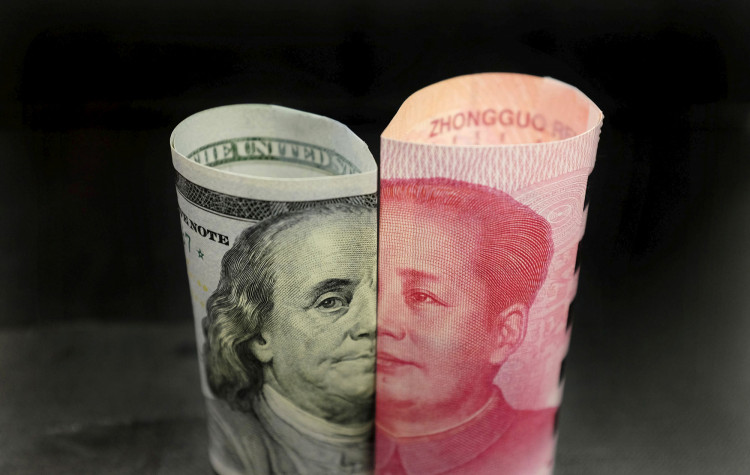China's yuan experienced a notable drop to a four-month low against the US dollar, prompting immediate action from state-owned banks to shore up the currency. This development unfolded on Friday as the onshore yuan dipped beyond the critical 7.2 per dollar threshold, touching a nadir of 7.24, the lowest since November 17, 2023.
According to Reuters, state banks were reportedly active in purchasing yuan in exchange for dollars, an effort to mitigate the currency's decline.
The depreciation of the yuan comes amidst growing expectations of monetary easing within China, aimed at bolstering the world's second-largest economy. The currency's slide was also influenced by a weakening Japanese yen and adjustments in other Asian currencies following the Bank of Japan's decision to end its negative interest rate policy. Carlos Casanova, UBP's senior economist for Asia, highlighted the global dynamics at play, suggesting that Asian currencies might face further depreciation against the dollar pending rate cuts by the Federal Reserve.
The People's Bank of China (PBOC) set the yuan's midpoint rate at 7.1004 per dollar, weaker than the previous fix and significantly firmer than market projections, indicating the central bank's intent to support the yuan. Market participants have noted the PBOC's consistent efforts to set the fixing rate at stronger levels than expected, pointing to a deliberate strategy to stabilize the currency.
The offshore yuan also saw a decline, reaching its weakest point since mid-November 2023. This weakness was attributed to heightened expectations for monetary easing after senior PBOC officials hinted at potential reductions in bank reserve requirements. The anticipation of further easing measures has added pressure on the yuan, with analysts like Ju Wang from BNP Paribas predicting a possible test of lows around 7.3.
China's stock markets felt the ripple effects of the yuan's depreciation, with the benchmark Shanghai stock index experiencing a 1% drop. The currency's decline raises concerns about the sustainability of the recent equity rally, as investors may seek to diversify into US dollar exposure amid uncertainties surrounding China's monetary policy direction.
The broader context of the yuan's slide includes adjustments by global central banks, with recent rate cuts by the Swiss National Bank and other economies contributing to market volatility. The US dollar's strength has continued to rise, further impacting the yuan's position. Analysts point to the external factors, particularly the weakness in non-US dollar currencies like the Japanese yen, as a significant driver of the yuan's depreciation.
Despite these challenges, experts emphasize the relative stability of the yuan compared to other major currencies and the overall stable market sentiment. China's economic fundamentals, gradually approaching their potential level, provide a solid foundation for the yuan amidst global fluctuations.






